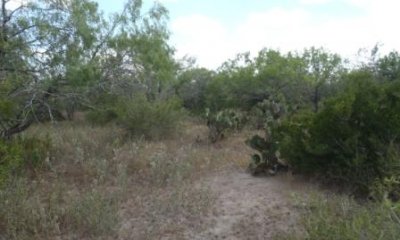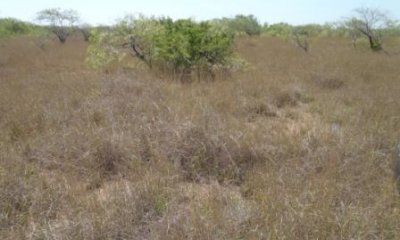
Tight Sandy Loam
Scenario model
Current ecosystem state
Select a state
Management practices/drivers
Select a transition or restoration pathway
- Transition T1A More details
- Transition T1B More details
- Restoration pathway R2A More details
- Transition T2A More details
- Restoration pathway R3A More details
- Transition T3A More details
-
No transition or restoration pathway between the selected states has been described
Target ecosystem state
Select a state
Submodel
Mechanism
The transition from the Grassland State (1) to the Shrubland State (2) can happen within 5 to 10 years. This transition is driven by persistently dry weather conditions, grazing management, and the lack of fire and brush management practices. Overstocking with grazing animals will put pressure on the herbaceous plant component of the community. This will create a more favorable environment with bare ground and open spaces for woody plants to germinate and grow. If the woody component is not managed it will begin to dominate the landscape and out-compete grasses and forbs for water, sunlight, and other resources.
Mechanism
Land managers may want to utilize this site as cropland or pastureland. To achieve this transition from the Grassland State (1), brush management and heavy disking with a Rhome disk, or other heavy implement, will be necessary to incorporate the vegetation into the soil. Prescribed burning can also be used prior to the disking operation to eliminate excessive vegetation. After the land has been cleared and an appropriate seedbed prepared, the crop or pasture can be planted.
Mechanism
Brush management, either mechanical or chemical, is necessary to restore the site to the Grassland State. Removal of woody species to reduce canopy cover will allow light to the herbaceous species. Prescribed grazing and fire will also help.
Mechanism
Land managers may want to utilize this site as cropland or pastureland. To achieve this transition, practices such as dozing and raking will be necessary. After the land has been cleared and an appropriate seedbed prepared, the crop or pasture can be planted.
Mechanism
The transition from the Converted Land State (3) to the Grassland State (1) will take time and patience. If practices such as fertilizer application and weed control are stopped, prescribed grazing is applied, woody seedlings are managed, and prescribed burning is applied, this state will begin the reversion back to the Grassland State (1). Introduced grass species are very resilient and competitive. They can maintain dominance in a pasture for a very long time after they are planted even without careful management. In these cases, management practices such as disking or applying herbicide to kill or suppress introduced species will be necessary to achieve the transition from an introduced pasture to a native pasture. This transition may occur very slowly because introduced grasses will remain competitive and will probably always be present. This transition may also require brush management practices and the re-introduction of desirable native species through range planting.
Model keys
Briefcase
Add ecological sites and Major Land Resource Areas to your briefcase by clicking on the briefcase (![]() ) icon wherever it occurs. Drag and drop items to reorder. Cookies are used to store briefcase items between browsing sessions. Because of this, the number of items that can be added to your briefcase is limited, and briefcase items added on one device and browser cannot be accessed from another device or browser. Users who do not wish to place cookies on their devices should not use the briefcase tool. Briefcase cookies serve no other purpose than described here and are deleted whenever browsing history is cleared.
) icon wherever it occurs. Drag and drop items to reorder. Cookies are used to store briefcase items between browsing sessions. Because of this, the number of items that can be added to your briefcase is limited, and briefcase items added on one device and browser cannot be accessed from another device or browser. Users who do not wish to place cookies on their devices should not use the briefcase tool. Briefcase cookies serve no other purpose than described here and are deleted whenever browsing history is cleared.
Ecological sites
Major Land Resource Areas
The Ecosystem Dynamics Interpretive Tool is an information system framework developed by the USDA-ARS Jornada Experimental Range, USDA Natural Resources Conservation Service, and New Mexico State University.








